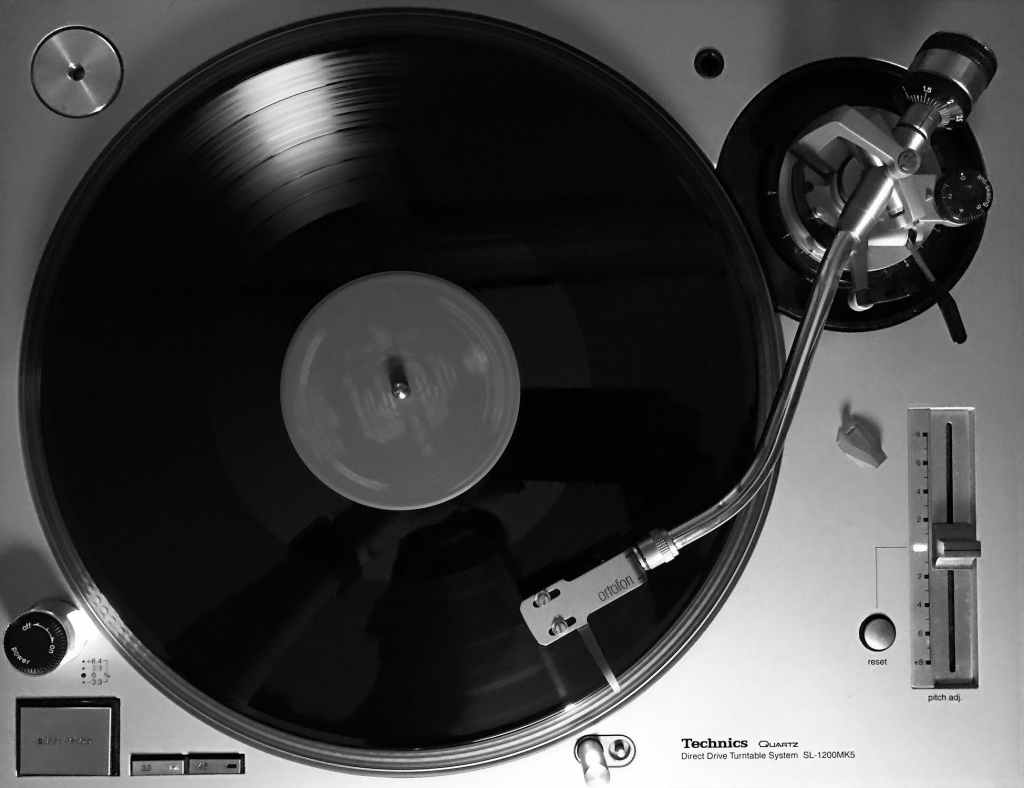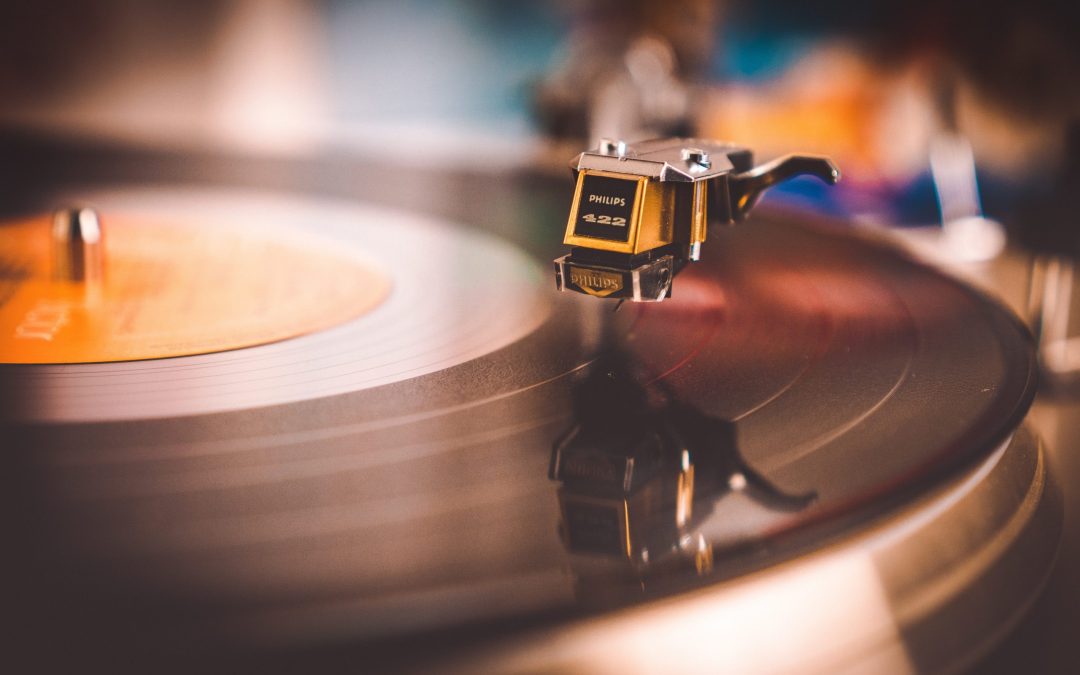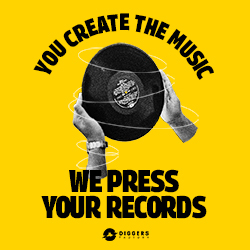Unless you’ve been living under a rock for the past several years, you’re probably aware by now that vinyl is back. In fact, not only has the format returned with a vengeance, but in some ways, it’s bigger than ever. For example, in October 2023, Taylor Swift’s new album Midnights shattered the all-time record for the largest sales week ever for a title on vinyl. The set sold 575,000 copies on vinyl in its debut week, more than triple the previous record.
Vinyl is huge for many superstars, but its success is not exclusive to chart-toppers. Many underground and unsigned artists are also jumping on board the vinyl train, and those who haven’t yet should seriously consider doing so.
Before you rush to sell your album on vinyl, there are a few things that you should think about and understand. Selling your music via records can be a great way to make some extra cash and to forge important relationships with your fans, but if you don’t do it right, you may wind up losing money or shipping a product that is less than ready.
In This Article
- Make Sure There’s A Need
- Understand The Format
- Think Ahead For Vinyl Pressing
- Remaster Your Music
- Which Size Vinyl Do You Need?
- Artwork
Make Sure There’s A Need
Getting your new album pressed on vinyl may sound like a really exciting idea (and it is!), however, the format is not for everyone. Before you go about spending your hard-earned money to put your music on wax records, make sure there’s a need and market for it.
If you are a brand new artist who has yet to develop a fan base, vinyl is not for you. Musicians who should consider getting vinyl made when it’s time to release new music are those who have enough fans who may be interested in purchasing the product to make it financially worthwhile. You can take a guess as to whether or not your fan base is ready for this by looking at your past album sales. Do your followers purchase your albums on CD or cassette, or do they exclusively stream the music you put out into the world? If you’ve never sold a CD before in your life, there’s a good chance that vinyl won’t perform much better.
You can also take to social media to ask your fans if they’re interested in vinyl. Post a question on Twitter or use your Instagram stories and the features available in that subset of the photo sharing platform to let your followers know you’re thinking about doing so, and query if they would support you by purchasing a vinyl album. Now, you can’t necessarily take them entirely at their word, but if you get hundreds of responses saying yes, that’s at least an indicator that vinyl might be a good fit. It’s likely that fewer than half of those who say they will buy it will actually do so, but if you can sell a couple dozen or 100 copies, then it might be worth it to have your new album printed on vinyl.
Is your new album done? Time to look into music promotion!
Understand The Format
If you’re thinking about getting your album pressed on vinyl, make sure you understand the format before you spend your money on something you don’t really get. Take some time and do some research to understand how vinyl works, how it’s made, why it’s a premium product, why audiophiles love it, and much more. You don’t necessarily have to become an expert on the subject, but if this is gonna be something that you are selling merch at shows and in your online merchandise store, it’s a good idea to at least have a basic understanding of what it is, how it works, and why it matters.

Plan Ahead For VINYL PRESSING
In today’s world, people are used to getting what they want whenever they want it. Sadly, this is not the case when it comes to vinyl, and especially not for those musicians looking to press their upcoming album on the format. While uploading a new song to Spotify might only take a few days and making a CD doesn’t take too long, vinyl requires a huge lead time period. This is why even when it comes to some superstars, the vinyl edition of their new album sometimes isn’t available for weeks or even months after it is released digitally.
According to music startup Qrates, which presses vinyl for many indie musicians, the entire process can take approximately 20 weeks from start to finish. Yes, that’s right–companies that make vinyl for bands sometimes require months of warning, and that doesn’t include having a test made to ensure that everything is just as the band wants it, which is a good idea. It would be a shame to spend a large sum of money and have hundreds of albums pressed, only to find out that something about it isn’t quite right.
So, if you are releasing an album in two weeks and you’ve only recently thought about pressing vinyl, just be aware that it won’t be available to sell for many months.
If you need help making sure the world hears you, give Planetary a call for help with music promotion on your new album: (323) 952-5050
Remaster Your Music
Getting your music mixed and mastered and engineered is a must for any artist who wants their music to be taken seriously and to sound its best. While it can cost hundreds or thousands of dollars to have your art professionally mastered, if you’re looking to get your new album pressed on vinyl, be prepared to spend even more.
Music needs to be mastered in a very specific fashion to work on vinyl. Just because your new EP, single, or album has been mastered already for digital storefronts, streaming platforms, or even to be made into a CD, that doesn’t mean it’s ready for vinyl pressing. You will have to reach out to an expert and pay them to remaster the music, otherwise it won’t sound right when a fan has the wax record in their hand. Vinyl is known to be perhaps the best option when fans are looking for high quality listening, so if it’s not mastered correctly, that selling point goes completely out the window.
Which Size Do You Need?
As you go about getting your new music pressed on vinyl, you need to understand what size record you’re looking for. Most LPs come in three sizes–7 inch, 10 inch, or 12 inch.
7 inches are appropriate for singles or very short EPs, as they usually have room for about six minutes of listening time on each side. So, depending on how long your tracks are, you might be able to make it a double single, or perhaps an EP with several tunes.
A 10 inch vinyl record features about 13 minutes of listening time on each side, or just under half an hour in total. This size could also work for an EP or an album, depending on how short all your tunes run.
The vast majority of full-length albums are pressed on 12 inch vinyl, because both sides allow for just over half an hour of listening, so about an hour of music can fit on one 12 inch disc. This is also why some albums come with two records, which makes them much more expensive to press, and it means fans have to really want them in order to pay the price.

IT DOESN’T HAVE TO COST YOU ANYTHING
Our partner Diggers Factory developed an on demand solution. The records are pre-ordered, meaning no stock to manage, and no finances to advance!
With Diggers Factory, your fans are the ones funding your project then receiving their records straight at home. Diggers Factory will help you design the records, manage the costs, fix the right selling price, and help you communicate effectively on social media. From manufacturing, delivery to customer service, they take care of everything!
Start your project now and enjoy 10% off the production costs with promo code PLANETARY10.
Artwork
One of the most exciting steps in creating and releasing an album is picking the album artwork. You might go with a graphic artist, a painter, or maybe a photographer who has some stunning images in their collection or who takes a great photo of your band. It’s fairly easy to create an image that works when you are uploading your music to Bandcamp, Spotify, Apple Music, and all the other online music platforms, and you can likely use the same files when having CDs made.
It is important to remember, however, that when vinyl is being pressed, the artwork may need to change. Vinyl albums, at least full-lengths, are much bigger, which means you might have to recreate the art or resize it in some way. If the image you are using for other formats is not in a high enough resolution, it will not work for your vinyl album. The artwork may end up looking grainy or blurry, and you certainly don’t want that when trying to sell a premium product to your fans. If vinyl is part of your release strategy, keep this in mind as you work with whoever is helping you make your album cover, back cover, or press photos.
Just like vinyl, radio is still huge. Let Planetary help you get your latest release on the airwaves with radio promotion for musicians.



